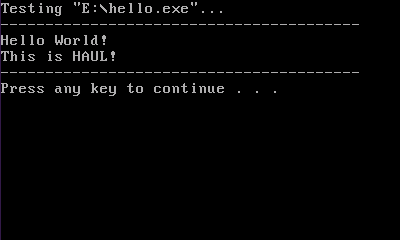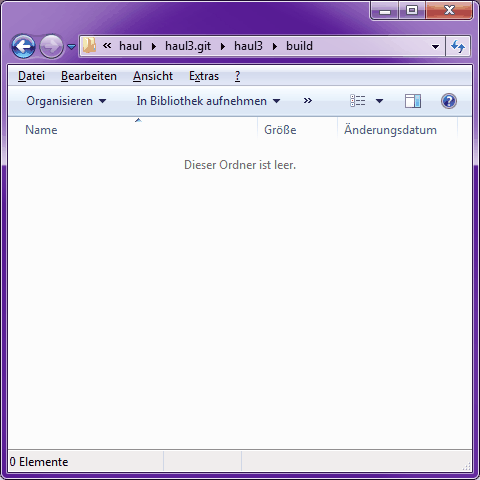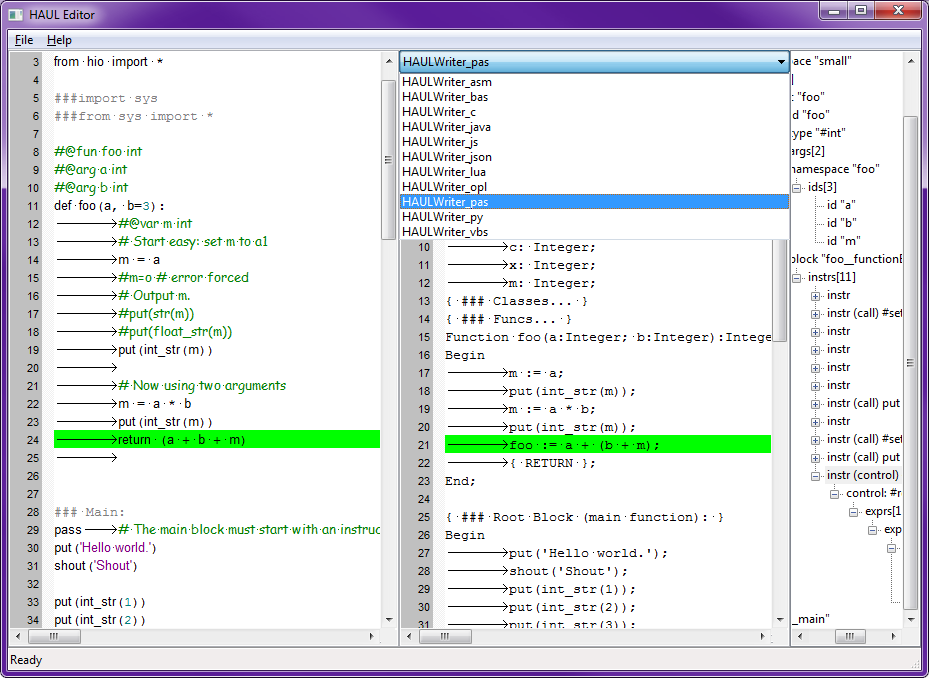HotKey's Amphibious Universal Language Version 3
The goal of HAUL is to have a piece of code that can translate itself into any other language. On its journey it can -of course- translate other source code as well.
These kinds of programs are nothing new and nothing too special. Every programmer should have tried this at least once themself. (See also: Transpiler, Quine, LLVM, etc.) Well, this is just my own approach at that. And I am having fun.
This project is in no way intended for any productive use. It's food for thought. An elaborate toy. Art and fart.
Have fun with it and compile responsibly.
//HotKey
- This version can
not yet translate its own source, but it's getting very close. At the moment there are quite some "pythonic" statements used in the parser; so they either have to be eliminated or implemented in the language parser as well...translate most of its own source, but there is still room for stability improvements - Finally, HAUL3 is using a proper AST structure, which allows output languages that vastly differ from scripting languages, e.g. JSON or Assembly.
- The source language is now valid (subset of) Python, eliminating the "chicken-egg-problem" of the previous versions. No more bootstrapping needed.
- This is the most object-oriented approach yet. Much easier to comprehend than the previous versions, but also much more complex and powerful. Finally: Real classes, namespaces, imports, libraries, ...
- Working goodies: Type inference, class inheritance, library imports
-
- Pro: Pretty easy to add new output languages and features.
-
- Con: High memory consumption (keeps a lot of structures in RAM), so it may be hard to run a big compilation on a C64...
- HAUL3 adds the concept of "builders". A builder can translate code into another language and package it for a certain hardware platform. This means, for example, one-click deployment to a PalmOS device :-)
Initially, the language was called "HAL", which stood for HotKey's Average Language and, of course, paid tribute to the computer in 2001: A Space Odyssey, as it also was a system that was seemingly running everywhere. But after a while I found that to be just too cheesy. Also, "HAL" is also something completely different already.
With version 3 I changed to "HAUL" which should create the mental image of hauling blocks of code to a different place.
While the language of the old versions was "average" by design, meaning that the language reflects the average functionality of all languages they can translate to, this is not true with version 3 any more. So I changed it to "amphibious", which stems from the two-fold nature of the source code being a runnable program and a blueprint at the same time. Also, it sounds nice and wacky.
- This third version was started in early 2013 after feeling the need for a real AST structure
- It is based on HAUL2 which did not use a dedicated lexer/parser/AST. It was therefore much simpler and limited.
- If you are curious for the origins of this project, then have a look at the nasty PHP based first version HAUL1.
None. Just download it.
None. That would defeat the purpose. It's all self-contained.
The builders, however, require their own platform-dependent tool chains (see tools directory). The goal is, of course, to get rid of any external dependency in the long run.
- Write your code in HAUL3 (which is valid python). You may need to annotate types where inference is not possible. Use either Python3 style colons or
#@var NAME TYPEannotations for that. The latter ensures Python 2 compatibility. - Use
translate.pyto translate code into the desired target language. - Use
build.pyto also compile/bundle/package/test the file on different architectures. This, unfortunately, requires external tools (QEMU, gcc, SDKs), which I regard a bit like cheating. - Use
ide.pyto play around with different languages and debug (requires wx).
- haul holds the main source code, including the parser(s) and builders
- data holds language/platform specific data, e.g. native libraries or resources
- examples holds some example code, ready to be translated to any other language
- tools holds external tools that are needed for some builders, e.g. emulators, compilers and SDKs
- Conditions must be surrounded by brackets or they might be misinterpreted
- Precedence can be off. Use brackets to make things clear.
notis not yet implemented. Use!=instead for now.+=is not working. Write it out. Sorry.- Comments at the same line of a colon may break the current block. Try keeping those comments in a new line in these cases.
- When using "monolithic" mode, you may get "undefined id" for id's that are declared later in the same file. You may use annotations to do a forward declaration.



